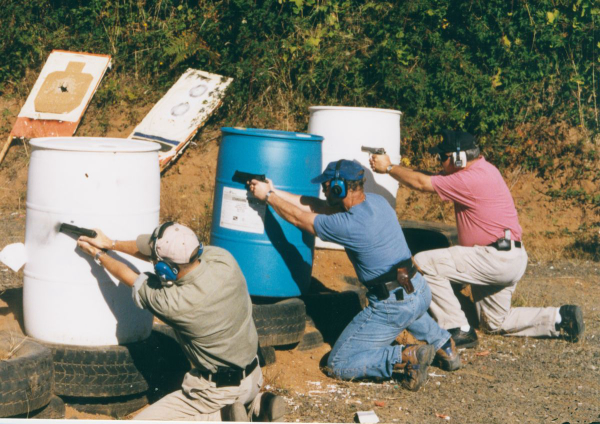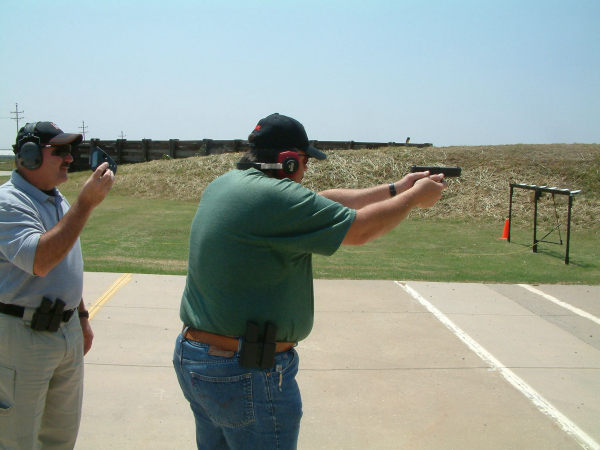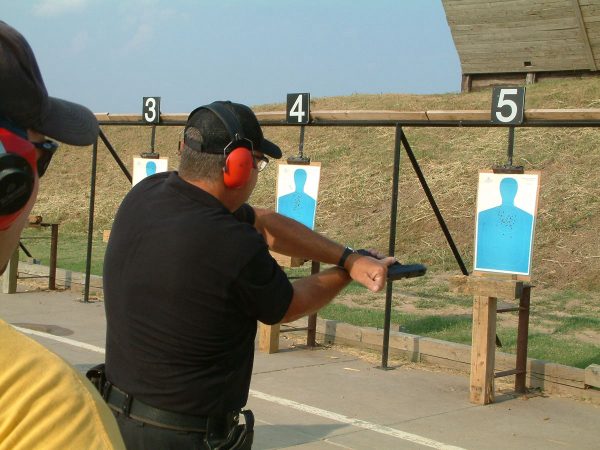I first certified as a law enforcement firearms instructor in 1983. From that time on, I sought to improve myself and tried to make sense of how we certified people “for duty” over the decades. The answer, taken from competition via the military, was “qualifications” – courses of fire that resembled shooting matches of the era.
The thing about qualifications, as I first pointed out in print in the early 1990s in Law & Order magazine, was the question “what exactly are we qualified to do?” If we look at the qual as a test, then the things we seek to see demonstrated for our approval should have something to do with what we’d prefer to see in street shootings – if they can’t be avoided altogether. That’s not what we’re seeing though.

A question on a law enforcement firearms instructors’ association website – and a proposed answer – is critical to police firearms training: in terms of qualifications, what are we testing?
To which I’d add, “To what, exactly, can we testify?”
If the idea of qualification is meeting a standard so we can prove that we adequately supervise and evaluate our personnel who carry guns in public, those questions should be the basis of testing.
The qualification’s advantages include that, as a line drill, they’re efficient. The corresponding disadvantage is that I can’t exactly testify to the performance of a particular officer – just as to the general performance on the individual line. That’s not helpful, if we expect (1) to document proficiency, (2) for purposes of retention, retaining or elimination, (3) and for purposes of defending an officer’s actions in court.

Another advantage is that it gives us a number, a percentage of the potential total in terms of hits or points. At one time, it was fashionable to grade everyone “pass/fail;” if you got to a certain number of hits in a silhouette, say 35/50 passes, the range officers would stop counting at 35 – it’s a pass, why bother?
Why would you do that, I asked? You can’t see who the marginal shooters are and make attempts to elevate their performance through guided coaching.
I was told it was in order to not be able to testify that there were only 35 hits out of fifty.
So, was the intention to keep relevant information away from triers of fact? – In short, obstruction of legal process?
The answer to the question – what are we testing? – was answered in the blog.
Aside from agency liability, one reason for the qualification exercise is that the agency’s state requires it. In our state, the LE qualification was set out – including the procedure for administering the annual test. There was no alteration allowed – then. Now? I don’t know.
For our outfit a few years before CPOST became a requirement, I moved for Standards. These are a range of skills to be performed individually in front of a range officer. The idea is that you are collecting evidence to be used in personnel actions, to be provided in legal actions and to find out where your people “aren’t getting it.”


The anonymous writer on the blog recommended the following as things to be graded for each individual:
Demonstrate
- Loading & unloading a firearm;
- Present the firearm (from the holster and low ready);
- Demonstrate good marksmanship at longer distance;
- Demonstrate practical marksmanship with speed at mid-range distances;
- Demonstrate precision shooting with speed (head shot) at close-range distances;
- Demonstrate a good shooting platform and recoil management during rapid fire at close-range distances (string of five or more shots);
- Weapon manipulation - Demonstrate an empty gun reload (worst case scenario);
- Weapon manipulation - Demonstrate a complex malfunction clearance (worst case scenario), anything that cannot be fixed with a simple tap/rack...a double feed is usually the easiest to set up.
The writer figured it could be done in 20 rounds. While it takes more time than running lines of shooters, the ammo cost is down. Plus, each person is identified and each skill recorded. When I pursued this line, I incorporated elements from the HK International Training Division in their Tactical Pistol class, the IALEFI Safety Check, and the state academy’s Standards, used in Basic training in our state.
It looked like this:
- Load
- In-battery reload
- Out-of-battery reload
- Stoppage – fail to fire
- Stoppage – fail to eject
- Stoppage – fail to extract (added after I was gone)
- Pivots and turns
- Cover drill (draw to guard, cover threat)
- Unload
Obviously, safe re-holstering was observed and noted. Movement was later added as well, I understand. As shooting was part of the Standards, 100% shot accountability was required during the standards; if there was a miss, the evaluation was stopped and the shooter would have to be remediated.
It’s not a “the officer is ready for the gunfight” test – that requires more than qualification or standards. The point of the standards is to ensure that each user can safely manipulate and use the weapon. Gun handling is the major part of this exam; there’s not that much shooting.
It’s good to see that this is still being considered. The writer finishes by noting that the quicker you move past the qual (and/or standards), the quicker you can get to training. If you can “qualify” with ten rounds, you have forty rounds in the box left to train with.
And that’s a good thing – if you do it.
— Rich Grassi
